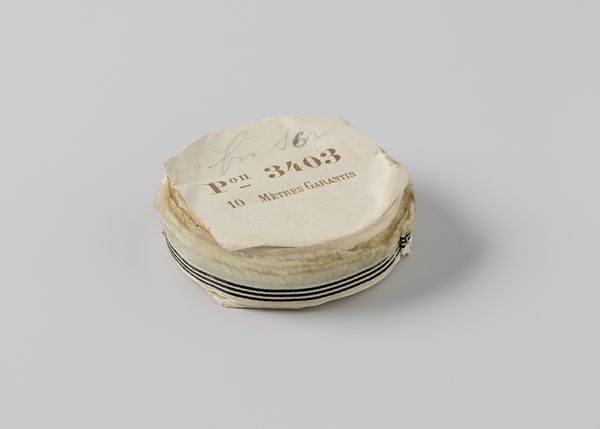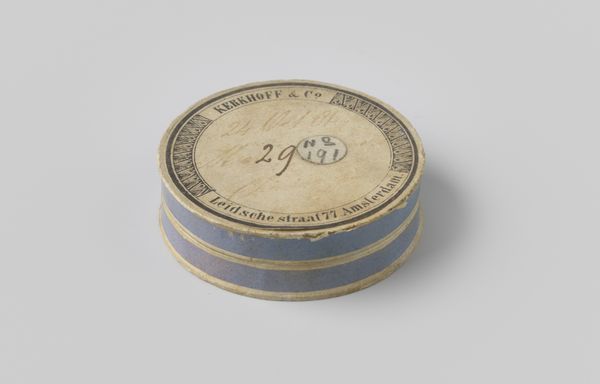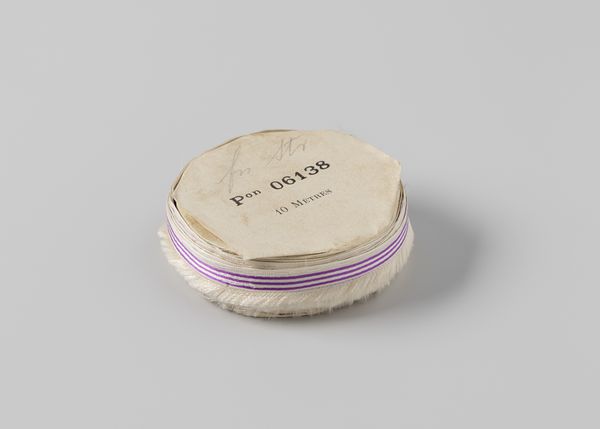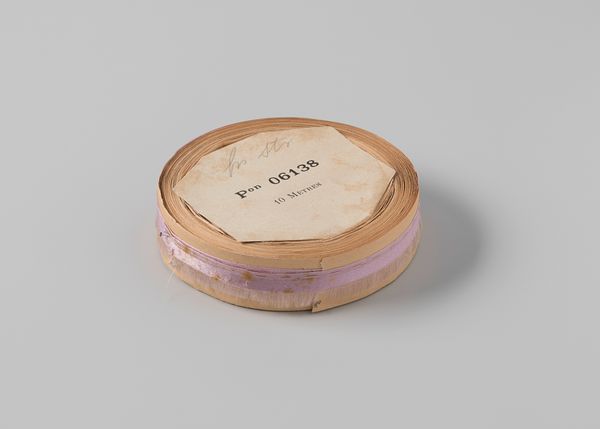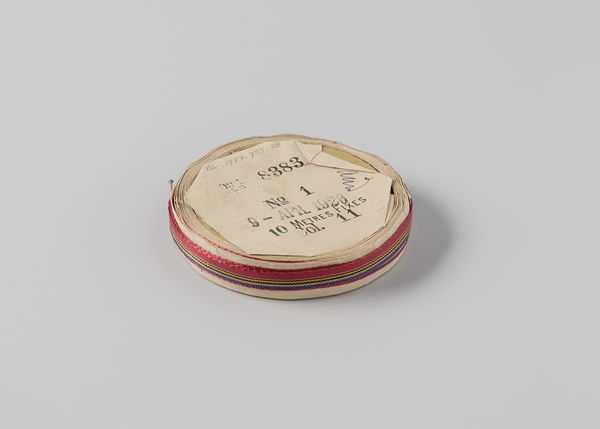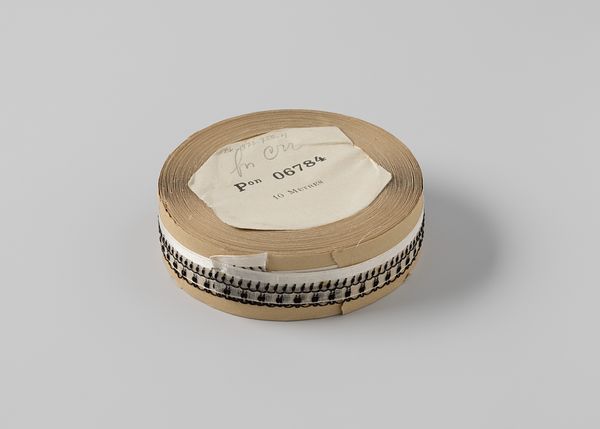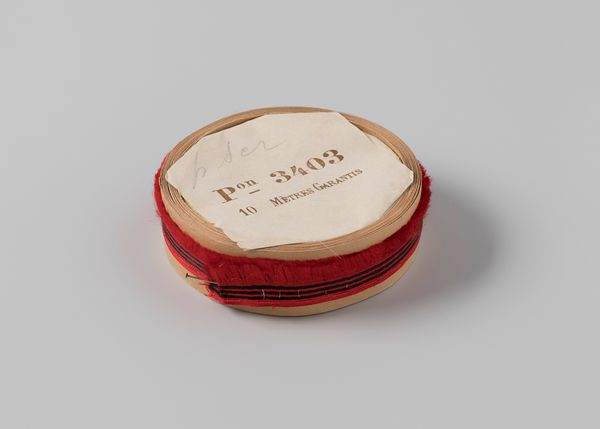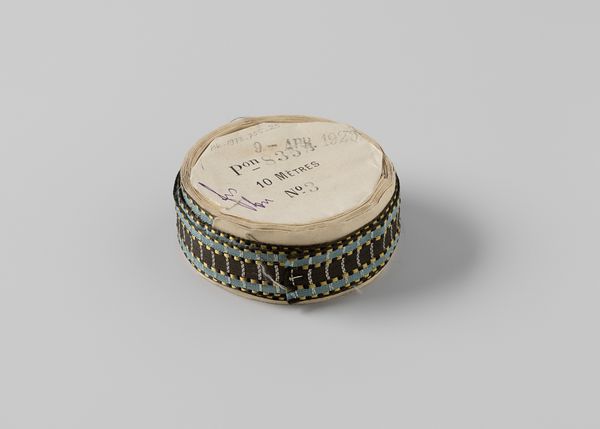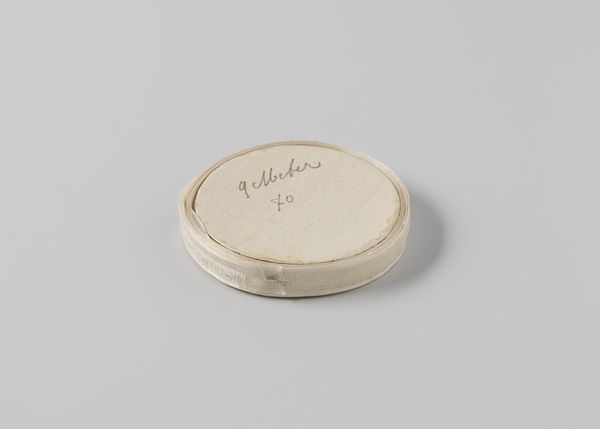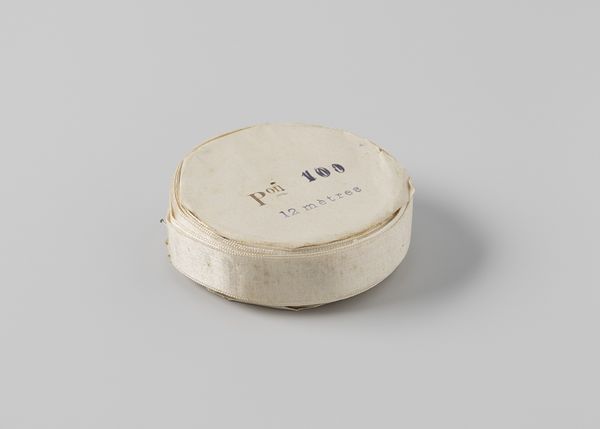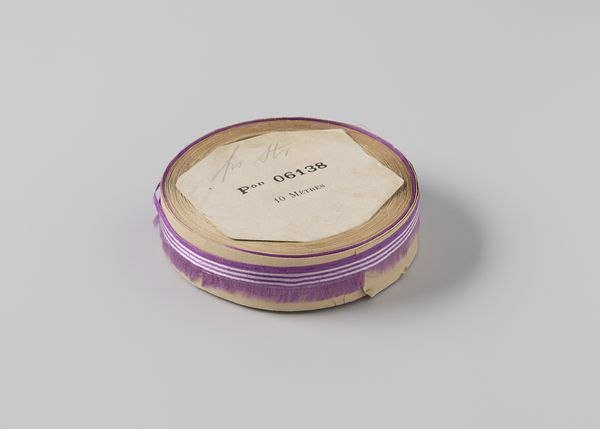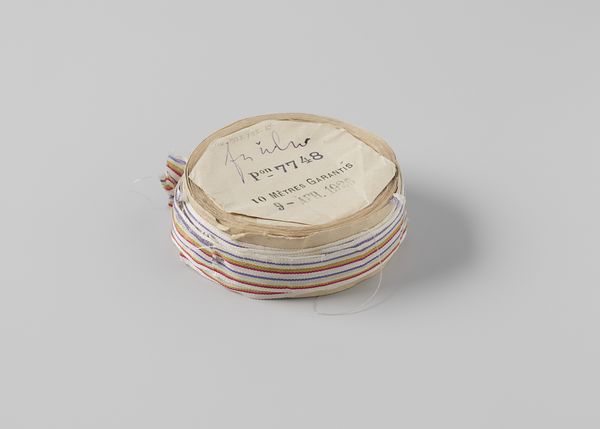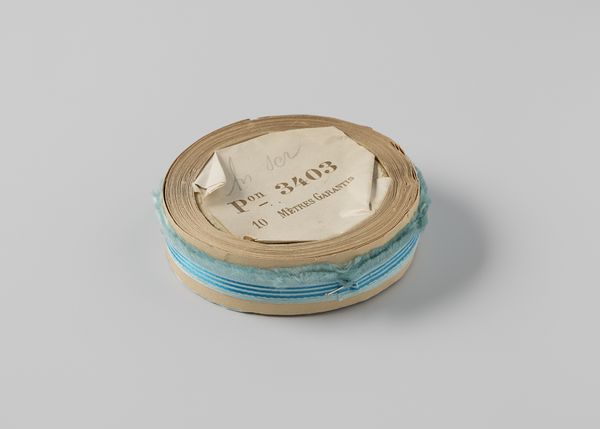
Rol met wit lint met één gerafelde zijde en drie blauwe horizontale strepen c. 1930
0:00
0:00
photography
#
studio photography
#
advertising product shot
#
product studio photography
#
product shot
#
product promotion photography
#
lifestyle product photography
#
photography
#
product design photgrpaphy
#
graphic design product photography
#
product photography
#
retail photography
Dimensions: width 1.5 cm, height 2.3 cm, diameter 8 cm
Copyright: Rijks Museum: Open Domain
Curator: What a curious object we have here! This is a photograph, taken around 1930 by Gustav Schnitzler. The Rijksmuseum holds it. It depicts something very simple: a roll of white ribbon. Editor: It's compelling! There's a sense of faded elegance... It looks almost like an artifact, rescued from a forgotten atelier. The close-up view focuses on the details. Curator: Absolutely, it presents an everyday item. Schnitzler made product photographs and advertising product shots. This falls into that category. Editor: Yes, that’s clear from the clarity and focus, and there’s a feeling of authenticity to this photograph of a roll of white ribbon with blue stripes. What captures my attention is that small "imperfection" – the single frayed edge. It gives the whole image a certain poignancy. Like a story is already begun, you know? Curator: The staging of product imagery was very precise and idealized for the burgeoning consumer market of the time. It helped construct aspirations around new ideas of the 'modern' lifestyle, suggesting sophistication and reliability. Editor: That's interesting, considering that ribbon can represent both utility and ornamentation. Its symbolism has associations to ceremony, rank, and order in some contexts; here the frayed end creates an interesting visual paradox to this symbolism. The ribbon seems slightly imperfect or 'real'. Curator: Well, one could say this ribbon aimed at the booming textiles industry, and served as signifiers of bourgeois aesthetic taste and material acquisition. What kind of meaning would a museum-goer now derive from it? That is to say, has there been a transformation from material product to art object, perhaps? Editor: The contrast of a commercial product shot turned art object, certainly adds a layer. It allows for an introspection on mass culture, what we choose to preserve, and perhaps even how a humble ribbon holds the potential to represent an emotional or cultural memory of a time gone by. Curator: It’s these sorts of images that prompt reflection on material culture, then and now. Editor: Indeed, an unusual photo of ribbon that prompts us to ask wider questions.
Comments
No comments
Be the first to comment and join the conversation on the ultimate creative platform.
